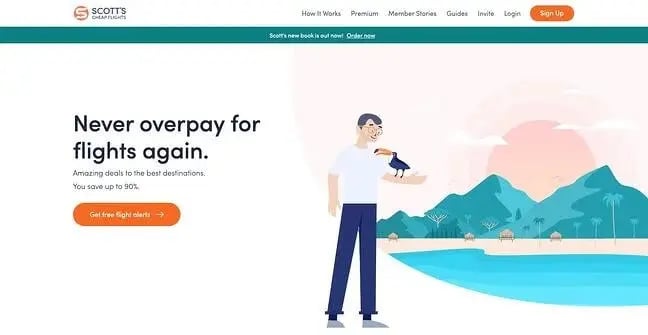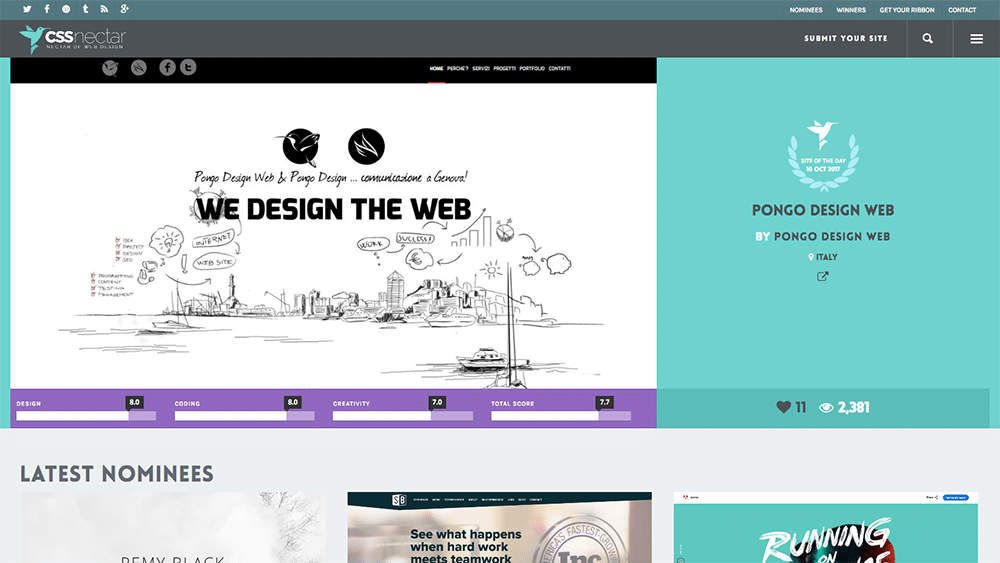How to Choose the Right Website Design for Your Business or Personal Brand
How to Choose the Right Website Design for Your Business or Personal Brand
Blog Article
Modern Site Design That Captures Attention and Transforms
In a significantly digital landscape, modern site layout has emerged as a critical consider capturing user focus and driving conversions. By purposefully employing aesthetic pecking order, responsive designs, and engaging interactive components, designers can create experiences that not just draw in site visitors but additionally assist in significant interactions. Reliable call-to-action approaches play a vital role in directing customers towards preferred results. As we discover these crucial components, it comes to be clear that understanding their interaction can significantly influence a website's efficiency and individual complete satisfaction. What are the crucial elements that genuinely make a difference?
Relevance of Visual Pecking Order
Aesthetic hierarchy is a vital aspect in web site design, as it guides individuals' attention and improves their total experience. By strategically arranging web content, developers can route customers to one of the most essential details first, thereby enhancing interaction and improving use. Reliable visual pecking order utilizes numerous strategies, consisting of dimension, comparison, color, and spacing. Larger components normally draw the eye, while contrasting shades can highlight crucial messages, making them attract attention amongst even more restrained parts.
Including a rational flow in material setup is necessary; as an example, positioning the most important information on top of a web page promotes immediate acknowledgment. Constant usage of typography, such as differing font sizes and styles, aids establish a clear material framework. This organization not just aids in navigation yet additionally develops trust fund, as users feel more comfy when they can quickly locate what they are searching for.
Ultimately, a well-executed aesthetic power structure not only enhances aesthetic appeal however additionally significantly affects customer actions. By focusing on vital elements and guaranteeing a seamless experience, designers can effectively transform site visitors into customers, strengthening the relevance of this foundational layout principle in modern website development.
Responsive Layout for All Instruments
Developing a smooth experience throughout different tools is essential in today's digital landscape, where individuals accessibility websites from smart devices, tablets, and desktops alike. Receptive layout is a vital strategy that guarantees internet sites adjust fluidly to various screen orientations, dimensions, and resolutions. By using versatile grids, photos, and CSS media inquiries, developers can create formats that keep aesthetic integrity and performance, despite the gadget being made use of.
The significance of receptive design extends past visual appeals; it directly affects customer engagement and conversion prices. A website that functions well on all tools motivates longer visits and minimizes bounce rates, as customers are more probable to connect with content that is very easy to navigate. In addition, internet search engine, specifically Google, focus on mobile-friendly sites in their rankings, making receptive layout an essential component of seo (SEO)
Including receptive design not only boosts user experience but also improves the growth procedure. By developing a single site that works across gadgets, organizations can conserve time and resources contrasted to creating different mobile and desktop versions. Ultimately, responsive style is a basic strategy for modern web site layout, ensuring ease of access and satisfaction for all individuals, despite their device.
Engaging Interactive Elements
While a responsive design prepares for a functional site, integrating appealing interactive components is important for capturing customer attention and promoting deeper links. Website Design. Interactive components, such as animations, quizzes, and clickable infographics, develop an extra vibrant individual experience, encouraging site visitors to spend even more time on the website
Incorporating interactive attributes can also guide customers with complex details, making it simpler to digest material. Interactive sliders can illustrate product variations, while embedded video clips can offer demonstrations or testimonials that reverberate more than fixed pictures or message. Gamification strategies, like rewards for involving or visit this site completing tasks with content, can enhance customer motivation and retention.
Efficient use of interactive components not only improves the user experience yet can also result in greater conversion rates. By making communications satisfying and interesting, companies can grow a sense of loyalty and depend on with their audience. It is vital to balance interactivity with efficiency; extremely complex features may hinder website rate, adversely affecting individual contentment. Ultimately, integrating properly designed interactive components can considerably raise an internet site's efficacy, driving engagement and conversions in today's competitive digital landscape.
Streamlined Navigating Practices
Effective navigating is a cornerstone of any kind of successful website, as it directly affects individual experience and material accessibility. Structured navigation practices make certain that individuals can official site conveniently locate details, boosting their communication with the website. A well-structured navigating menu ought to be user-friendly and basic, typically including a minimal variety of primary categories to stay clear of frustrating site visitors.
To attain streamlined navigation, developers should focus on an ordered structure that logically arranges content. Executing breadcrumb routes can give individuals with context about their existing place within the site, enabling seamless backtracking. Additionally, making use of drop-down food selections can efficiently conserve room while still giving accessibility to subcategories.
Responsive design is important, as navigation ought to be functional throughout all gadgets (Website Design). Mobile users, particularly, gain from touch-friendly menus and retractable sections that keep usability without endangering aesthetics

Reliable Call-to-Action Methods
A well-crafted call-to-action (CTA) is necessary for directing customers toward wanted results on a site, as it urges them to engage with web content or buy. To optimize their efficiency, CTAs need to be clear, compelling, and purposefully placed throughout the website.
First, utilize action-oriented language that communicates urgency or worth, such as "Get going," "Join Now," or "Case Your Price cut." This language not just encourages users but also establishes clear assumptions regarding the hop over to these guys following steps.
Second, think about style aspects; CTAs must stand out visually with contrasting colors, enough whitespace, and noticeable positioning. A button that is easy to see and click rises the chance of customer interaction.
Additionally, individualizing CTAs based upon user habits or demographics can dramatically improve involvement. Customized messages reverberate more with users, driving higher conversion prices.

Conclusion
These elements jointly enhance customer experience, guaranteeing that site visitors stay engaged and encouraged to explore material further. By prioritizing these design concepts, organizations can considerably improve individual retention and conversion rates, eventually leading to better success in the electronic landscape.
In a progressively electronic landscape, contemporary internet site layout has arised as a crucial aspect in recording user interest and driving conversions.Visual pecking order is an essential aspect in website style, as it guides users' attention and boosts their overall experience.The importance of receptive layout extends beyond appearances; it straight affects individual engagement and conversion rates.Incorporating responsive style not only enhances customer experience however also simplifies the advancement process. Inevitably, responsive layout is a basic technique for modern site design, guaranteeing ease of access and satisfaction for all customers, no matter of their gadget.
Report this page